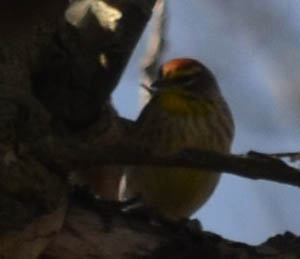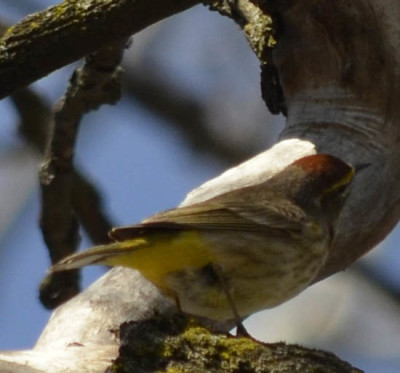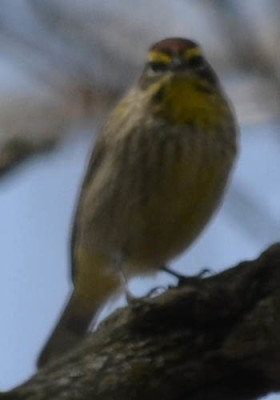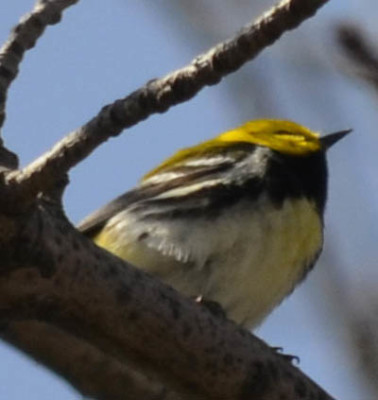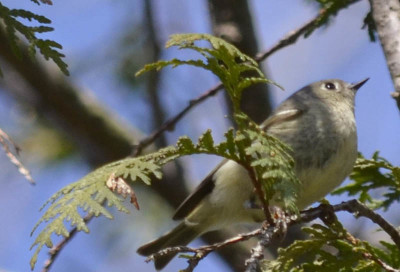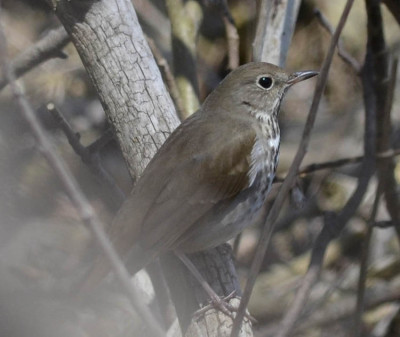We finally had a sunny day! (Note I said “a” and “had.” Apparently that one nice day is all we are getting for at least another week.) Fortunately, I was able to go out for a few hours and check Lakeside Park in Mississauga to see if any warblers were swooping about in the springtime breeze. A few were and one of them was one I hadn’t seen here before: The coppery shine of its small cap of feathers first caught my eye. Then I noticed it had a lovely yellow throat and some more yellow underneath near the tail. Its back, wings and sides were rather drab but the front and sides had many fine greyish streaks. What was this new warbler called?
This Warbler May Be Disappointed with the Trees We Have to Offer
According to my field guide, it was a Palm Warbler. (To be technically correct, “they” were Palm Warblers. Several were exploring a tall poplar and several maples.) If he was looking for a Palm tree, he may be rather disappointed in southern Ontario.
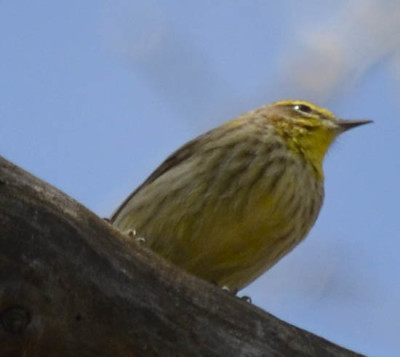
A check of the Cornell University website said that Palm warblers usually build a nest on the ground in sphagnum moss at the base of a short tree. So I guess that the lack of Palms shouldn’t be a problem. They nest in much of Canada, especially near bogs.
The tail wagging the guide mentions is a good field clue. Like Phoebe’s, these warblers seem to like to wag their tails up and down often. I noticed it while taking photos and made a note in case it was helpful for identification.
This Bird Sports a Black Throat and Bright Yellow Face
Another warbler was mixing with the Palms. All of these birds were at least 40 feet up in the tree tops, which made it easier to see them as they flew from tree to tree, but more difficult to get identifying photos.
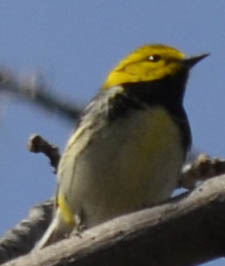
This was a Black Throated Green Warbler. I know, not just because another kind birder told me, but because of the vivid thick black streaks on the white chest and the sharp white wing bars.
Some Familiar Favourites
Spring is running so late that there were still quite a few familiar faces flitting through the forest. I probably should have titled this post “the day of the Ruby Crowned Kinglets” as I must have seen at least 15. Often I could see 3 or 4 in one cluster of dogwoods at the same time. Many of the males were singing and all of the Kinglets were on the move.
In a Cedar near some Kinglets, I saw a flash of electric yellow as a warbler landed. Although I never did get a good look at it, I saw its beak which was a warbler-shaped darning needle, not a goldfinch-shaped seed cracker. My guess based on the most common warbler at Lakeside, even in mid-summer, is that it was a Yellow Warbler.
Hermit Thrushes were also on the run. Although they usually spread out a bit, this time I saw a group of 5 within feet of each other, each moving rapidly over the forest floor, picking and choosing morsels as they moved.
Will Spring Ever Succeed?
It’s back down to 7C today and heavily overcast and windy. Not really ideal weather for migrants. Still the one bright day was a cheerful moment in a dull May.
Related Reading
Join In
Have you seen any familiar faces of spring so far? Please share your experiences with a comment.

